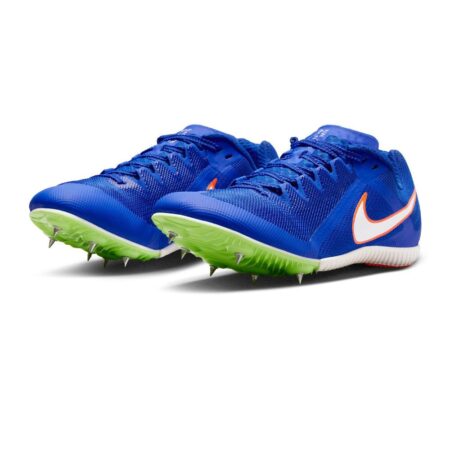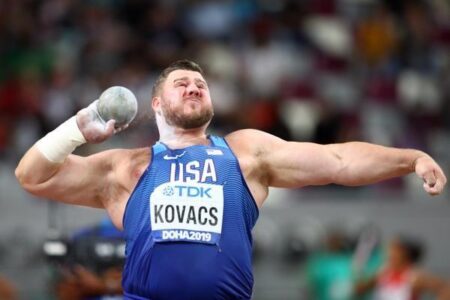A new systematic review published on ScienceDirect.com is shedding light on the complex relationship between athletes and their sleep patterns. Titled “Deconstructing athletes’ sleep: A systematic review of the influence of age, sex, athletic expertise, sport type, and season on sleep characteristics,” the study takes a deep dive into how various factors-from an athlete’s age and sex to their level of expertise and the specific sport they compete in-impact the quantity and quality of their rest. As sleep is increasingly recognized as a critical component of athletic performance and recovery, this comprehensive analysis offers fresh insights that could help coaches, trainers, and athletes optimize training and enhance competitive outcomes across different sports and seasons.
Athlete Sleep Patterns Uncovered Exploring How Age and Sex Shape Rest Quality
Recent research reveals that age and sex play pivotal roles in shaping the sleep architecture of athletes across various disciplines. Younger athletes tend to experience longer durations of deep sleep, which is crucial for physical recovery, while older athletes exhibit increased fragmentation and lighter sleep stages. Meanwhile, gender differences emerge prominently: female athletes often report higher sleep efficiency but are more susceptible to insomnia during competitive seasons. These variations underscore the importance of tailored sleep interventions that accommodate the physiological and hormonal factors unique to each subgroup.
To better visualize these trends, the table below summarizes key sleep characteristics stratified by age group and sex, highlighting the nuanced interplay between these factors:
| Sleep Parameter | Young Male Athletes | Young Female Athletes | Older Male Athletes | Older Female Athletes |
|---|---|---|---|---|
| Total Sleep Time (hrs) | 7.8 | 7.6 | 7.0 | 7.1 |
| Deep Sleep (%) | 25% | 22% | 18% | 20% |
| Sleep Efficiency (%) | 88% | 91% | 83% | 84% |
| Awakenings per Night | 2.1 | 1.9 | 3.0 | 2.7 |
These findings highlight several important considerations for coaches, sports scientists, and health professionals, including:
- Age-specific recovery protocols: Emphasizing deeper sleep promotion in younger athletes while mitigating sleep fragmentation in older populations.
- Gender-informed strategies: Addressing hormonal fluctuations in female athletes that may impact sleep quality during high-stress periods.
- Monitoring sleep during competitive seasons: Recognizing that sleep disturbances are more prevalent and may require targeted interventions.
- Age differences:
- Sex differences:
- Develop age-specific recovery protocols focusing on promoting deeper sleep in younger athletes and addressing fragmentation in older athletes.
- Implement gender-informed strategies considering hormonal changes that affect sleep quality in female athletes, especially during high-stress (competitive) periods.
- Monitor sleep quality during competitions to identify and intervene on sleep disturbances that may impact performance and recovery.
- Endurance athletes often report prolonged sleep onset latency due to pre-competition anxiety and cumulative fatigue.
- Team sport players may experience fragmented sleep caused by irregular match scheduling and travel demands.
- Power sport athletes frequently face difficulties maintaining deep sleep phases, essential for muscle repair and strength gains.
- Summer: Employ blackout curtains and limit evening screen time to counteract extended daylight exposure.
- Winter: Use light therapy boxes in the morning to offset increased darkness and regulate circadian rhythms.
- Year-round: Maintain consistent sleep schedules and practice relaxation techniques to support sleep onset and maintenance.
Certainly! Here’s a concise summary of the key points from the section on athlete sleep patterns:
Summary: Athlete Sleep Patterns by Age and Sex
Recent research shows that age and sex significantly influence sleep architecture in athletes:
– Younger athletes experience more deep sleep (important for recovery).
– Older athletes have lighter, more fragmented sleep with less deep sleep.
– Female athletes tend to have higher sleep efficiency but are more prone to insomnia during competition.
– Male athletes generally have slightly lower sleep efficiency and different patterns of awakenings.
Key Sleep Metrics (by group):
| Parameter | Young Males | Young Females | Older Males | Older Females |
|———————-|————-|—————|————-|—————|
| Total Sleep Time (hrs)| 7.8 | 7.6 | 7.0 | 7.1 |
| Deep Sleep (%) | 25% | 22% | 18% | 20% |
| Sleep Efficiency (%) | 88% | 91% | 83% | 84% |
| Awakenings per Night | 2.1 | 1.9 | 3.0 | 2.7 |
Implications for Practice:
If you need further assistance with this content, such as adapting it for presentations, expanding the analysis, or creating targeted recommendations, feel free to ask!
Expertise and Sport Type Reveal Distinct Sleep Challenges for Athletes
Athletes’ sleep patterns are profoundly shaped by their level of expertise and the specific demands of their sport. Elite performers often face unique challenges, including disruptions due to frequent travel, heightened psychological pressure, and intense training schedules that can impair both the quantity and quality of sleep. Conversely, less experienced athletes may struggle primarily with inconsistencies in their sleep routines and adapting to competitive stressors. These disparities highlight the need for tailored sleep strategies that account for an athlete’s skill level, ensuring optimal recovery and performance.
The type of sport further defines sleep characteristics, with endurance, team, and power-based sports exhibiting distinct sleep profiles. For instance:
These patterns suggest that sport-specific interventions-ranging from tailored nap strategies to manipulation of sleep environment-can effectively address the unique sleep disturbances encountered across disciplines.
| Sport Type | Common Sleep Challenge | Recommended Intervention |
|---|---|---|
| Endurance | Delayed Sleep Onset | Pre-sleep relaxation techniques |
| Team | Sleep Fragmentation | Consistent sleep schedule  timing |
| Power | Reduced Deep Sleep | Optimized sleep environment (cool, dark, quiet) |
Seasonal Shifts Impact Athlete Recovery Insights and Practical Sleep Strategies
As environmental conditions fluctuate throughout the year, athletes experience notable variations in their recovery patterns, heavily influenced by seasonal changes. Longer daylight hours in summer often lead to delayed sleep onset, reducing total sleep time, while shorter days of winter may enhance melatonin production, promoting earlier sleep and deeper rest. These photoperiod shifts impact not only the quantity but also the quality of sleep, influencing muscle repair, hormone regulation, and cognitive recovery essential for peak performance. Coaches and sports scientists must account for these physiological adaptations when designing training and recovery protocols to maintain athletic readiness across all seasons.
To optimize recovery during seasonal shifts, athletes can incorporate practical sleep strategies tailored to each period:
| Season | Sleep Pattern | Recommended Strategy |
|---|---|---|
| Spring | Gradual increase in sleep onset latency | Evening mindfulness exercises |
| Summer | Reduced total sleep time | Blackout curtains, screen time curfew |
| Autumn | Improved sleep quality | Maintain routine, moderate caffeine intake |
| Winter | Earlier bedtimes, longer duration | Light therapy, morning exposure |
In Summary
As this comprehensive review reveals, the sleep patterns of athletes are influenced by a complex interplay of factors including age, sex, level of expertise, type of sport, and seasonal variations. Understanding these variables is crucial for coaches, trainers, and sports scientists aiming to optimize recovery and performance. As research continues to illuminate the nuances of sleep within athletic populations, tailored strategies can be developed to support the unique needs of each athlete. This systematic analysis marks a significant step toward unlocking the full potential of sleep as a cornerstone of athletic success.





